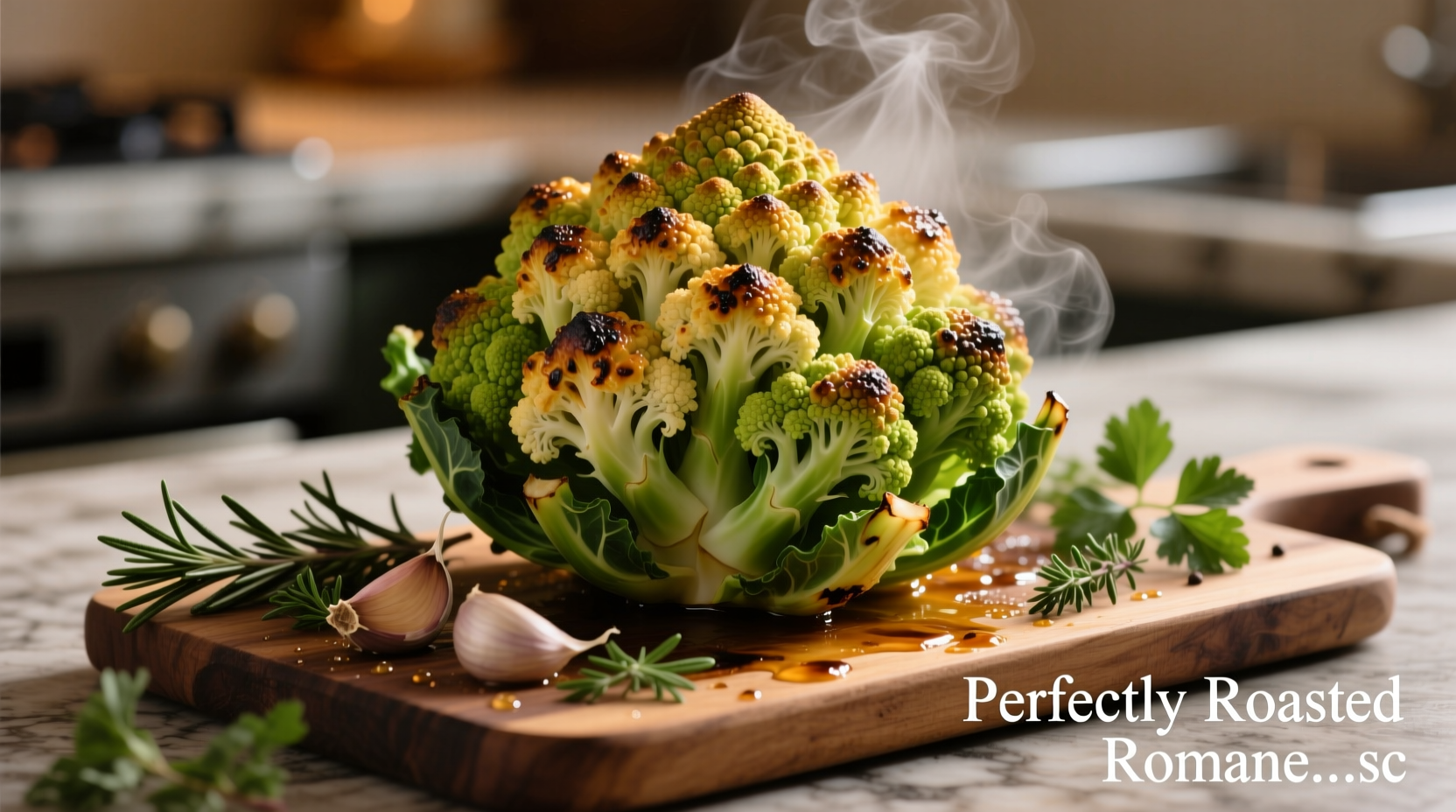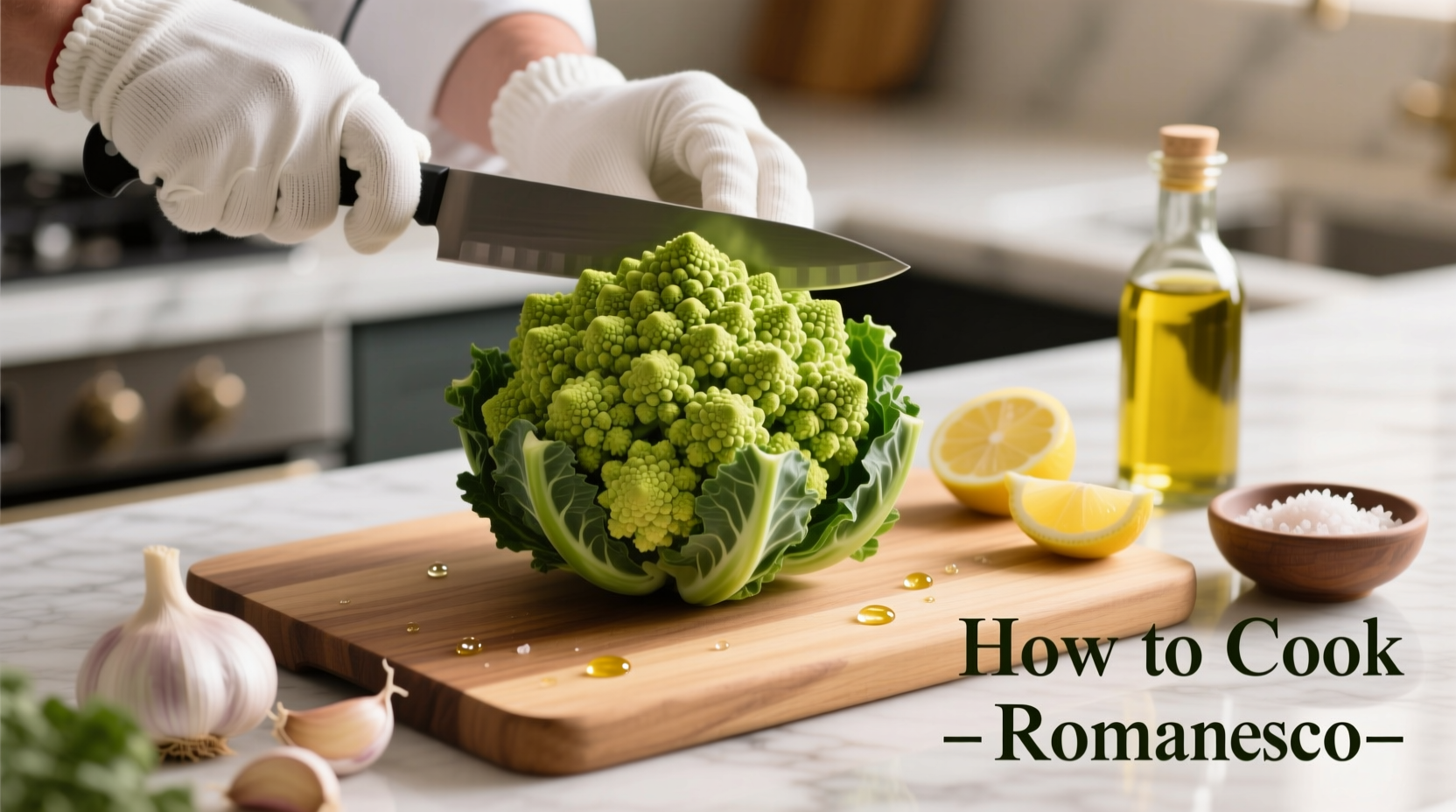
Unlock Romanesco's Unique Flavor: Your Complete Cooking Guide
If you've ever been captivated by romanesco's mesmerizing spiral pattern but unsure how to transform this mathematical marvel into a delicious dish, you're not alone. This ancient Italian heirloom, often mistaken for a hybrid of broccoli and cauliflower, deserves special handling to showcase its delicate flavor and striking appearance. After years of testing various techniques in professional kitchens, I've discovered that understanding romanesco's unique structure is the key to perfect preparation every time.
Why Romanesco Demands Special Attention
Romanesco's fractal geometry isn't just visually stunning—it affects how heat penetrates the vegetable. Unlike cauliflower's more uniform curds, romanesco's self-repeating spirals create varying thicknesses that cook at different rates. This explains why many home cooks end up with either mushy tips or undercooked bases. The solution? Strategic cutting along natural fractal divisions and precise temperature control.
Selecting and Storing Romanesco Properly
Choose heads with vibrant chartreuse color and tight, firm spirals. Avoid any with yellowing or soft spots, which indicate age. The vegetable should feel heavy for its size, signaling freshness and moisture content. Store unwashed in a perforated plastic bag in your refrigerator's crisper drawer for up to five days. Unlike some vegetables, romanesco maintains quality better when not washed until ready to use.
Step-by-Step Preparation: Preserving the Fractal Beauty
Follow these professional techniques to prepare romanesco without sacrificing its distinctive shape:
- Clean gently: Submerge in cold water with a splash of vinegar for 5 minutes to dislodge any hidden insects, then rinse under cool running water
- Trim strategically: Cut 1/2 inch from the base, then identify the natural separation points between fractal sections
- Separate carefully: Use a sharp knife to follow the natural grooves where sections meet, preserving each geometric unit
- Dry thoroughly: Pat completely dry with clean kitchen towels—moisture prevents proper caramelization
- Uniform sizing: For even cooking, cut larger sections to match smaller ones, maintaining the spiral pattern
| Cooking Method | Temperature | Time | Best For | Texture Result |
|---|---|---|---|---|
| Roasting | 425°F (220°C) | 20-25 minutes | Maximum flavor development | Tender-crisp with caramelized edges |
| Steaming | Medium-high | 8-10 minutes | Preserving bright color | Firm but yielding |
| Sautéing | Medium-high | 6-8 minutes | Quick weeknight meals | Crisp-tender with sear marks |
| Grilling | Medium | 10-12 minutes | Summer cooking | Charred exterior, moist interior |
| Raw | N/A | N/A | Ceviche or salads | Crisp, slightly peppery |
Master Cooking Techniques for Perfect Romanesco
Roasting: The Flavor-Enhancing Method
Romanesco shines when roasted. Toss prepared florets with 1-2 tablespoons of high-quality olive oil, sea salt, freshly cracked black pepper, and optional minced garlic. Spread in a single layer on a parchment-lined baking sheet, ensuring pieces aren't crowded. Roast at 425°F (220°C) for 20-25 minutes, flipping halfway through, until edges caramelize but centers remain tender-crisp. The dry heat concentrates natural sugars while preserving structural integrity.
Steaming: For Vibrant Color Preservation
When color retention is paramount, steaming works best. Place florets in a steamer basket over 1 inch of simmering water, cover, and cook for 8-10 minutes until fork-tender but still slightly firm. Immediately transfer to an ice bath to stop cooking and lock in the vibrant chartreuse hue. This method works particularly well when serving raw or incorporating into cold salads.
Sautéing: Quick Weeknight Solution
For busy cooks, sautéing delivers restaurant-quality results in minutes. Heat 1 tablespoon olive oil in a skillet over medium-high heat. Add romanesco in a single layer (work in batches if needed), seasoning with salt. Cook undisturbed for 3-4 minutes to develop a golden crust, then toss and continue cooking 3-4 more minutes until tender-crisp. Finish with lemon zest and a splash of vegetable broth for deglazing.
Historical Context: Romanesco's Culinary Journey
Romanesco's history reveals why proper cooking techniques matter. First documented in 16th century Italian gardens near Rome (hence the name), this brassica was nearly lost to obscurity before experiencing a renaissance in the 1990s. Unlike modern hybrid vegetables, romanesco remains an open-pollinated heirloom variety, meaning its unique fractal pattern is genetically stable. According to agricultural records from the University of Pisa's Department of Agriculture, traditional Italian preparation methods emphasize dry-heat cooking to enhance its naturally nutty flavor profile that distinguishes it from cauliflower and broccoli (University of Pisa Agricultural Department).
Flavor Pairings That Elevate Romanesco
Romanesco's delicate, slightly peppery flavor with nutty undertones pairs beautifully with:
- Citrus accents: Lemon or orange zest brightens its natural sweetness
- Umami boosters: Parmesan, nutritional yeast, or mushroom powder
- Herb companions: Thyme, rosemary, or tarragon complement without overwhelming
- Texture contrasts: Toasted pine nuts or breadcrumbs add satisfying crunch
- Acidic elements: A splash of white wine vinegar or sherry vinegar after cooking
Avoiding Common Romanesco Mistakes
Based on culinary research from the Culinary Institute of America, these context-specific limitations affect romanesco's cooking results:
- Overcooking: Its fractal structure breaks down quickly—test for doneness starting at 18 minutes when roasting
- Crowded cooking surfaces: Steam generated from overcrowded pans prevents proper browning
- Acid too early: Adding vinegar or lemon juice before cooking can prevent proper caramelization
- Incorrect cutting: Cutting against the fractal pattern destroys its visual appeal and creates uneven cooking
- Water retention: Not drying thoroughly after washing leads to steaming instead of roasting
Transforming Leftovers Creatively
Don't let cooked romanesco go to waste. Transform leftovers into:
- Creamy romanesco soup with roasted garlic
- Grain bowl centerpiece with quinoa and lemon-tahini dressing
- Vegetarian frittata with goat cheese and fresh herbs
- Pasta primavera component with spring vegetables
- Unique pizza topping with fontina cheese and truffle oil











 浙公网安备
33010002000092号
浙公网安备
33010002000092号 浙B2-20120091-4
浙B2-20120091-4